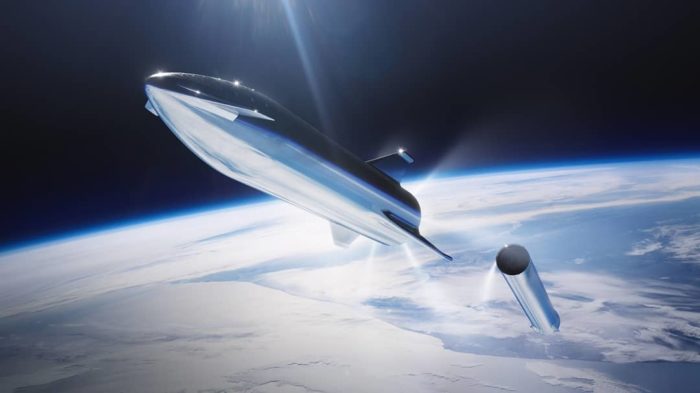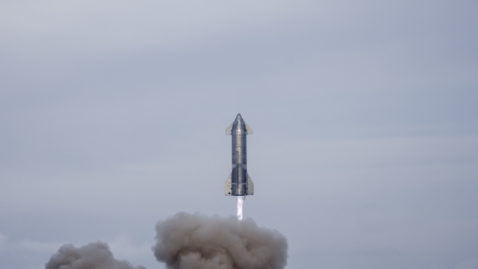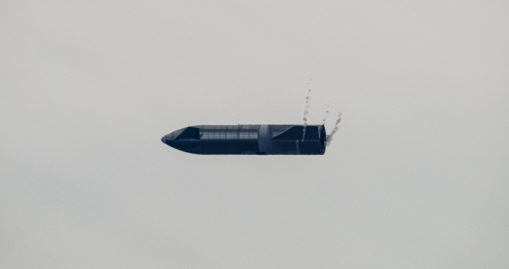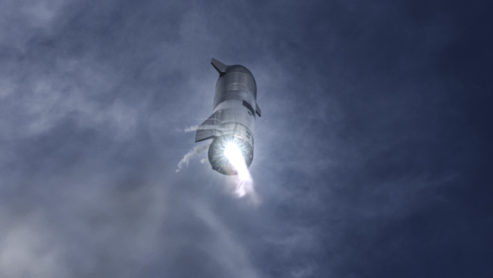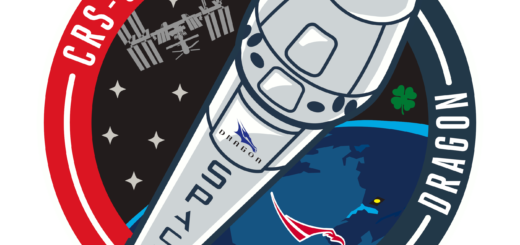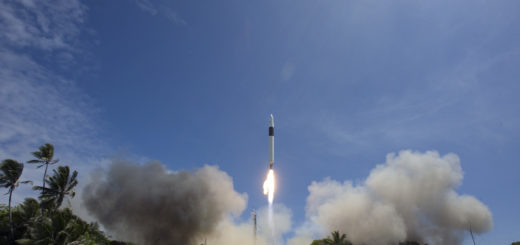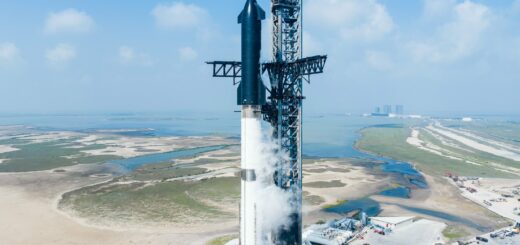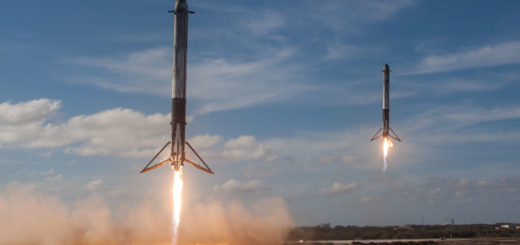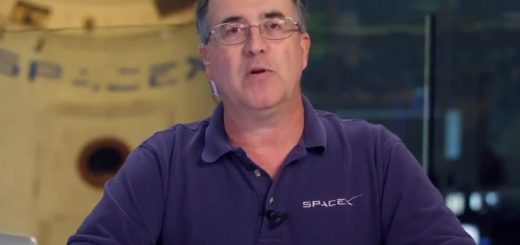Starship SN10 landed intact but exploded shortly after, Elon Musk revealed what had gone wrong
Just one month after the Starship SN9 test flight, its successor SN10 launched. This was another flight to a height of 10 kilometers but this time SpaceX got much closer to a complete success. SN10 was the first prototype to land in one piece, although it exploded a few minutes later. SpaceX CEO, Elon Musk, later explained why the landing was not successful. In addition, the next prototype SN11 has already been rolled out to the launch pad and might launch this week.
SN10 was another prototype of Starship, measuring 50 meters in height and 9 meters in diameter, with a dry mass of over 120 tons. The prototype was powered by three Raptor engines burning a mixture of methane and oxygen. However, Starship is only the second stage of a larger orbital rocket, which will consist of an additional 72 meters tall Super Heavy booster which will use up to 28 Raptors.
Production of the propellant tanks for Starship SN10 began in September 2020 at a SpaceX build site in Boca Chica, Texas. In December 2020, the nose cone was completed and then mated to the tanks on January 2, 2021. The aft control surfaces were installed in mid-January and on January 29 the prototype was transported to the nearby launch pad. Ground testing was conducted during February and it included pressure tests using nitrogen and two static fires of Starship’s Raptor engines. Testing was delayed by a week due to freezing temperatures and power outages, but even so SN10 was ready for its test flight by the end of February. However, unfavorable weather led to another minor delay so the launch was rescheduled for March 3.
During the first launch attempt the flight computer interrupted the countdown shortly after the engines ignited. Elon Musk explained the reason was “slightly conservative high thrust limit”. In other words, the computer monitors the thrust of the engines after ignition, and the thrust is expected to reach an optimal value. Deviation from this value is allowed but only to a certain extent (there is an upper and a lower limit). If thrust outside of this allowable range is detected, the computer will abort the launch, as an abnormal thrust value could indicate a problem with the engines. In this case, the thrust was only slightly higher than the allowed upper limit, so it was not a serious problem. SpaceX decided to slightly increase the limit that had been set to an unnecessarily strict value. This way, the launch would not be interrupted on the next attempt, if the same level of thrust as before was detected. After a refueling cycle, a second launch attempt was made. This time, the computer didn’t abort it and Starship SN10 lifted off on March 3 at 23:13 UTC.
Starship SN10 probably wasn’t significantly different from the previous prototype SN9 and their test flights were also very similar. In both cases, the spacecraft ascended to a height of 10 kilometers, while gradually shutting down their Raptor engines. After the last engine shut down at apogee, the ship gracefully flipped to a horizontal position and several minutes of free fall followed. The spacecraft used four control flaps to remain stable while freefalling. These flaps are powered by Tesla electric motors and batteries.
The main difference from the previous Starship flight was that all three Raptors were ignited before landing in case any of them failed. The goal of this ignition sequence was to increase the chance that at least two engines would ignite. This way, the failure of Starship SN9, when one Raptor failed to ignite, would be avoided. All three engines on Starship SN10 ended up relighting without issues and after the the ship flipped itself to a vertical orientation, two engines were intentionally shut down and the final part of landing used just a single engine. This was a change from a plan previously announced by Elon Musk who said that three engines would be ignited and once it was confirmed all were running fine, one engine would be shut down immediately.
Starship SN10 managed to land and after touching down, it remained vertical and in one piece, marking the first successful landing for any Starship prototype. However, the landing was harder than planned, leaving Starship tilted and its landing legs crushed. Three of the six legs did not lock into place before landing, so the ship’s ability to dampen the impact was reduced. However, Elon Musk later explained that even if the legs had deployed correctly, the landing was too hard and the legs would have gotten crushed anyway. Regardless, the bigger problem was that methane was leaking from the ship after landing. It seemed to be accumulating in the engine section of the ship which eventually led to an explosion which destroyed SN10 about 8 minutes after landing.
A few days later, Elon Musk revealed what had happened. The reason for the hard landing was that the engines were running at a lower than expected thrust. Initially, the reason for the low thrust was unknown, but it was later discovered that the probable cause was that the landing engine ingested some of the helium that was used to pressurize the methane header tank (with one of the baffles seving as a straw, according to Musk). Because of this, the thrust was too low which led to the ship descending at a rate of 10 meters per second which was too fast and caused a hard landing. Interestingly, the helium pressurization system was only added as a quick fix for the low-pressure issue that foiled the landing of Starship SN8. Elon Musk now admitted it was a mistake to use helium as a temporary workaround for the SN8 issue, and if SN10 used autogenous pressurization, as was the original plan, it might have landed fine.
So what does this mean for the next Starship flight? According to Musk, several fixes are in work for SN11. Additionally, the Raptor relight sequence will be adjusted again. The landing manoeuvre will now be performed with two ignited engines all the way down, while the third Raptor will only relight in case of problems with one of the other two engines. However, it’s unclear if SN11 will still use the helium pressurization system. The landing legs will also eventually get an upgrade, but SN11 uses the same type of legs as all the previous Starship prototypes.
SN10 spent only 33 days on the launch pad and that was with testing delayed by about a week due to power outages and bad weather. So it would not be surprising to see SN11 go through testing much faster. SpaceX defintiely isn’t waiting around, only 4 days after the SN10 flight, the SN11 prototype was rolled out to the launch pad. Cryogenic pressure testing was conducted a few days later and a static firing was attempted on March 15, but seemed to have been aborted shortly after engine ignition. It’s expected the test will be redone, which could happen as early as March 16. If the static fire doesn’t find any issues, Starship SN11 could launch a day or two later. It’s expected to fly to an altitude of 10 kilometers again, so the main difference from the previous test flight should be that this time only two Raptors will be used for landing. Will SN11 be the first Starship to nail the landing perfectly?
This article was originally published in Czech by Petr Melechin and was then translated into English and updated with new information.



